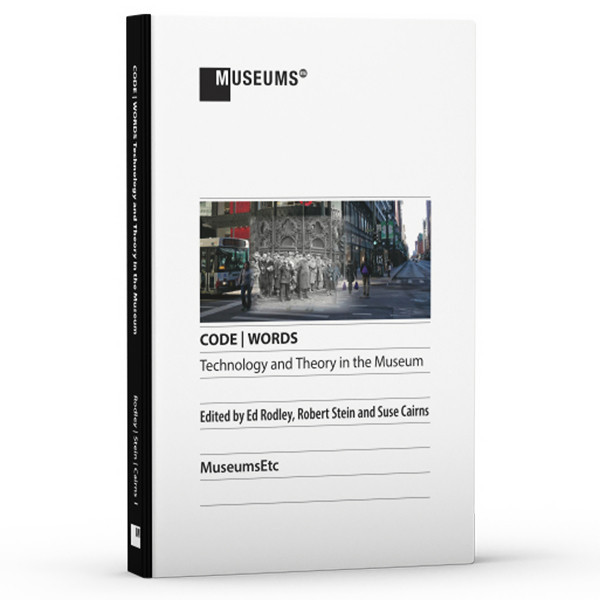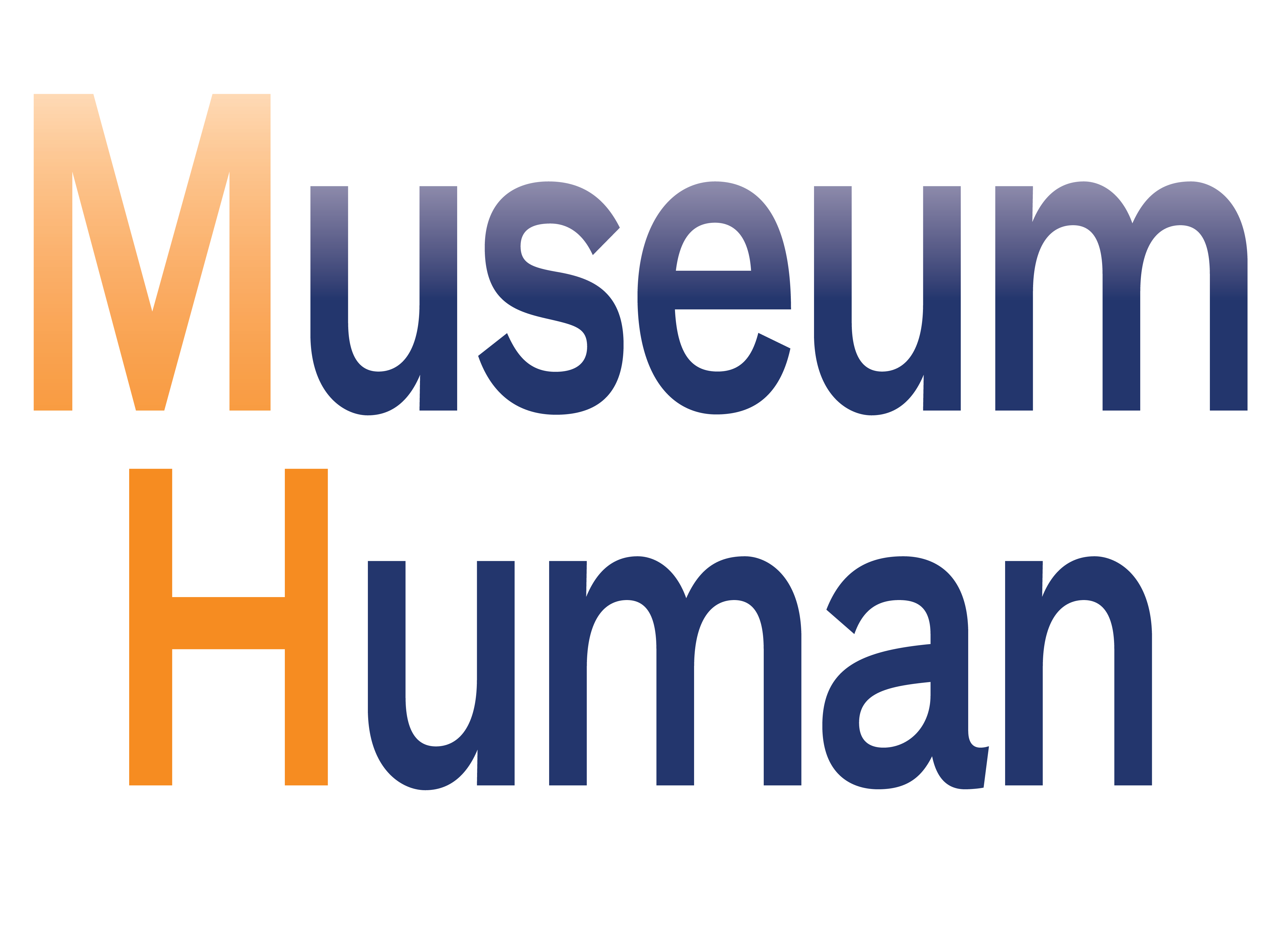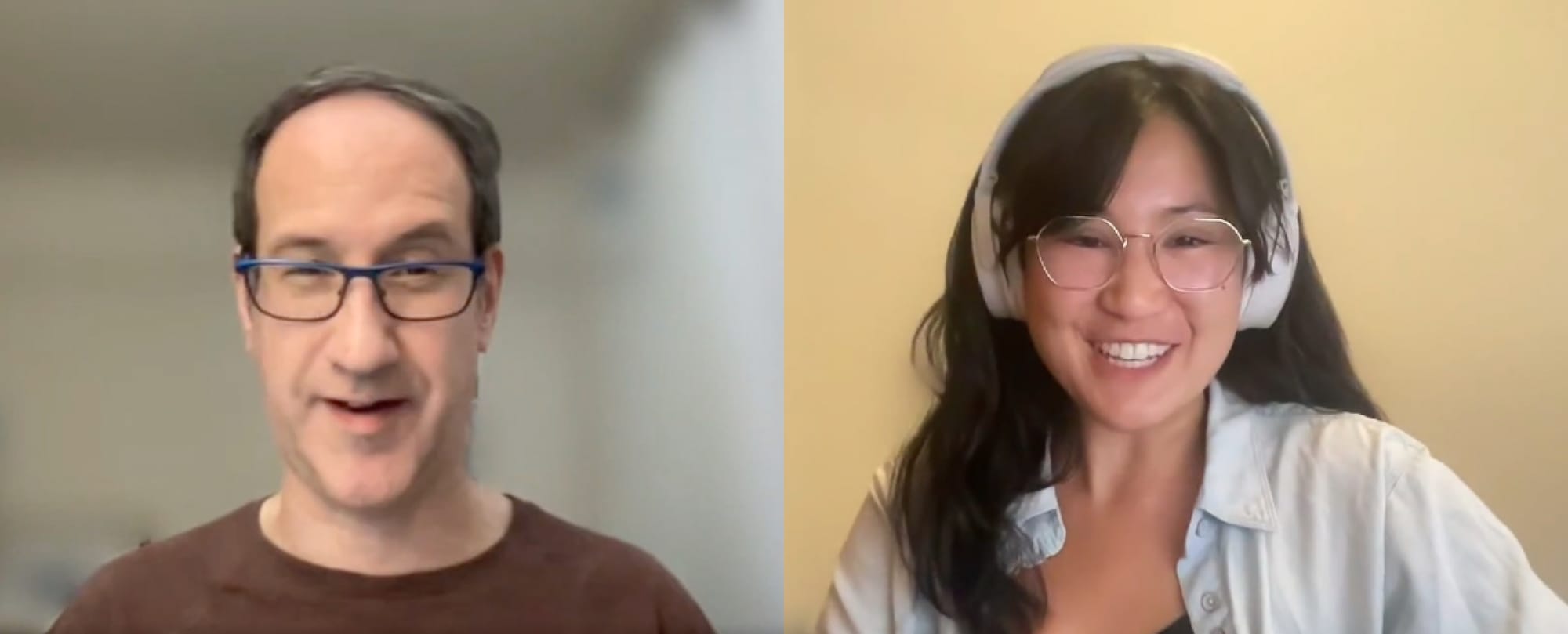The museum theory collective CODE | WORDS produced a series of highly readable and interesting essays on Medium from early 2014 to late 2015, and now have produced an updated print version available from Museums Etc., an Edinburgh-based publisher who has produced a series of books on museum innovation and practice. Check them all out.
I read the online essays with great interest and purchased the book as a holiday gift to myself (I know, I need to get out more). And it's for a good cause, as all royalties from book sales support Museum Computer Network conference scholarships.

The subtitle, Technology and Theory in the Museum, actually does say it all, but the different takes on what technology has done and still can do to and for museums is what makes the book worth reading. I also appreciated that many of the essays refer to others in the book; there's a sense of a lively conversation going on, maybe not as dynamic as an online series of comments, but informed nonetheless. (So there, says print.)
A quick rundown of the chapters shows the breadth of outlooks on what might seem obvious (technology good):
-
Rob Stein, recently of the Dallas Art Museum and one of the editors of the book, in a brief introductory essay: "Many of us feel that our goal of a highly discursive and evolving conversation on museum theory was hampered by the tools we chose and the unfamiliarity this mode of discourse has for our audiences." These are sobering words for someone like me who's pushing new modes of communication on my colleagues.
-
Michael Peter Edson, an esteemed cultural-sector digital transformation consultant and Head of Digital at the newly forming UN Live Museum for Humanity, compares the emerging digital thought-space to dark matter when seen from the vantage point of the museum professional. There's something out there affecting the way our audiences and culture think and behave, but we're still only seeing the visible horizon of our collection and our traditional practice. An interesting extended metaphor.
-
Stein returns with a response to philosopher Peter Singer's pointed 2013 New York Times op-ed in which he wrote that money spent on new wings for art museums should be going to curing blindness instead. These sentiments were later echoed by Bill Gates, speaking philanthropically, and I've heard leaders at the Met react with alarm, countering that "cultural blindness" is a disease itself that needs to be combated. But Stein is up to the challenge and insists that museums find measurables beyond simple attendance numbers to demonstrate just what museums contribute to local, national, and global culture. Museums, he writes, are "a vast interconnected system of activity, facility, and program that can be monitored, tweaked and tinkered with." One can hear curators groan, "But what about the art and scholarship?" Indeed.
-
Luis Marcelo Mendes, journalist and museum consultant actively working on two new museums under construction in Rio de Janeiro, quotes the 1909 Italian Futurist Manifesto and a 2013 CNN anti-museum rant as demonstrating a certain modern disdain for museums. If looking to movies like Ferris Bueller's Day Off and Band of Outsiders doesn't seem to provide answers that public attitudes towards museums are changing, maybe unofficial "hacks" like OrsayCommons and Museum Hack show that the public is finding its own way around perceived unfriendliness of museums. (I should mention a kerfuffle that MuseumHack recently had over a pretty insensitive ad.) Can museums have their own change agency or will they forever be trying to keep up with an ever-hacking and better-wired public?
-
Bridget McKenzie, director of international cultural learning consultancy Flow Global, wrote a provocative piece holding museums to a higher standard of progressive engagement against what she calls (with plenty of evidence) the current global crisis, demanding that the museums practice internally, in terms of governance, leadership, and decision-making, what they preach publicly about ethics and openness. (Any writer who quotes Evgeny Morozov on "digital solutionism" and who decries the "plutocratic" model of museum operations has no problems poking elite eyes.) She asks, "How can our governance reflect our mission?" The answer is in making staffs not only digital-literate, but systems-literate. The more I read this essay, the more I like it.
-
Aleia Brown and Adrianne Russell, who co-founded #museumsrespondtoferguson and both lead other scholarly and social-media intersections, push strongly for museums to look to social media, and not just static websites, to engage with marginalized communities and to confront their own role in said marginalization. Only an internal response can move past the privilege of the institution and into the galleries and programs. This essay will have you checking your own thoughts about diversity in your institution and just who is benefitting from its programs and scholarship.
-
Nick Poole, CEO of the Chartered Institute of Library and Information Professionals (CILIP), makes an interesting counter-argument to the idea that we need to rush to embrace technological change. Could museums, he pondered, lose sight of their moral and ethical role as they scale to take advantage of digital technologies? Like McKenzie, he uses the term "openwash" to describe seemingly liberating organizational changes which mask a deeper intransigence and alignment with authority. He's in favor of letting new structures emerge through messy ambiguities. Is there such a thing as controlled chaos? And can scholarship thrive in such a setting?
-
"Beta World" … now there's a title begging for a sci-fi book. Janet Carding, a well-traveled museum professional and currently Director of the Tasmanian Museum and Art Gallery, Hobart, addresses how museum leadership can adjust to ever-changing environments. The increasingly popular strategic plan, she noted, is only a starting point. Like several essayists in this volume, she writes that participatory change planning only works when the museum unlocks its processes in favor of collaboration and a bias towards action. Katy Paul-Chowdhury, a consultant who worked with Carding on changing the organizational culture at the Royal Ontario Museum, adds an appendix detailing the successes and challenges of their 100-Day Change program as it confronted a museum's typical intellectual currency in specialized subject experts rather than professional managers. Teams, skills, and processes have to be enacted to create the capacity to change, which will create more enlightened leaders at all levels in the institution. This may be the only answer (my editorializing here) to the disconnect between museum administrators who think they're transparent and museum staffs who feel left in the dark.
-
Speaking of curators, John Russick, Vice President for Interpretation & Education Experience at the Chicago History Museum, makes a worthwhile point that the aloof, cold curator is a straw man—and if you've ever seen a curator disagree with something involving the interpretation of their scholarship, it's usually with anger and passion, not snippy snark. He relates the work his institution did on the Chicago 0,0 exhibition and app, a mashup of historical and current Windy City geography. A history museum has to be fun and informative. Why can't the rest of us?
-
Merete Sanderhoff, Curator/Senior Advisor of digital museum practice at the Statens Museum for Kunst in Copenhagen, wonders the same thing, this time about art and cultural learning in schools. She's in favor of radical openness and sharing as an answer to why museums matter, and sees digital tools as the key because of how they erode distance and time. Going hand in hand can be teaching respect for the intellectual property of online art, not through restrictive copyright but with proper attribution. And considering today's kids are already today's makers and content creators, they're already well ahead of us in terms of sharing trumping copyright.
-
In another essay asking if we were rushing too quickly to digital at the cost of losing true human interaction, Mike Murawski, the Portland Art Museum's Director of Education & Public Programs at Portland Art Museum, recognizes we can't fully unplug even if we wanted to. The way to combat the fetishization of technology in museum practice is to democratize it. Echoing calls I've heard even from senior staff at the Met, digital needs to become a part of every staff member's practice so that it loses its alienating preciousness, its threatening otherness. This empowering of staff can be every bit as scary to museum authority as empowering the public, but democracy can't be a word only applied to audiences.
-
Finally, Ed Rodley, one of the book's editors, and Associate Director of Integrated Media at the Peabody Essex Museum, ends the book with sex. As in, not just the sharing of data and objects but the promiscuity and mating of ideas. He applies evolutionary arguments to enlisting audiences in the active spread of cultural information. Epiphany, he quotes from others, doesn't come from data or metadata, but it does come from empowering museums and the public together. My own thought is, that while it might be true that behind the curtain of a wide-open internet is corporate money and unpleasant agendas, that's not why any of us are in this field.
Whew! This one review can't encompass the way that these essays play off of each other. I recommend reading for yourself; you'll feel a momentum about openness within your institution that will have you running to your co-workers and writing a manifesto or two to your boss and senior staff. Or maybe you are senior staff, in which case, all I can say is, open up!
In addition to Rodley and Stein, this book was edited by Suse Cairns, Digital Content Manager of the Baltimore Museum of Art, with a foreword by Seb Chan (formerly of the Cooper-Hewitt Design Museum). And this just in: CODE | WORDS has a new project starting up! You'll never think of love letters the same way again.






